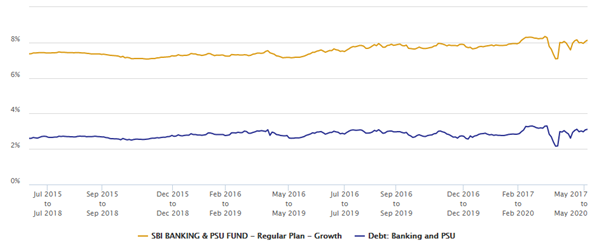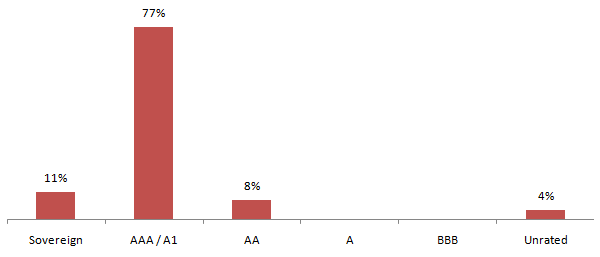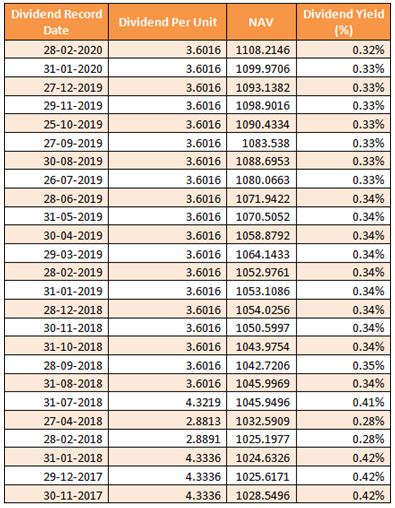SBI Banking and PSU Funds: A good debt fund in the current environment

With rising concern about credit risk among mutual fund investors, one debt fund category which is seeing a lot of investor interest in Banking and PSU funds. As the name suggests these funds invest in debt and money market instruments issued by banks, public sector undertakings and public financial institutions. The debt issued by these organizations is thought to have less credit risk because they either are owned by the Government (PSUs) or regulated by the Reserve Bank of India which ensures that they have adequate capital to meet their financial obligations compared to issuers in the NBFC and private sector.
SBI Banking and PSU Fund
SBI Banking and PSU Fund is one of the top performing schemes in its category giving 11.3% returns in the last 1 year. This scheme was launched in October 2009 and has Rs 4,783 Crores of assets under management (AUM) as on 30th April 2020. The expense ratio of the fund is 0.81%. Rajeev Radhakrishnan is the fund managers of the scheme. The Scheme seeks to generate regular income through investments in a basket of debt and money market instruments consisting predominantly of securities issued by entities such as Banks and Public Sector Undertakings (PSU) with a view to providing reasonable returns, while maintaining an optimum balance of safety, liquidity and yield. The chart below shows the growth of Rs 1 lakh lump sum investment in the scheme over the last 5 years.

Source: Advisorkhoj Research
Rolling Returns
The chart below shows the 3 year rolling returns of the scheme versus the banking and PSU funds category over the last 5 years. You can see that 3 year rolling returns of the scheme are very stable in the 7 – 8% range over the last 5 years across different interest rate regimes. The returns stability of the scheme makes it a good choice for moderately conservative investors over 3 years or longer investment tenure.

Source: Advisorkhoj Research
Credit Quality
The chart below shows the credit quality profile of the scheme. You can see that 88% of the scheme assets enjoy sovereign and the highest credit rating (AAA or A1). Another 8% of the scheme assets enjoy the second highest rating. The credit quality of the scheme is quite high.

Source: Advisorkhoj Research
YTM and Maturity
The chart below shows the yield to maturity and average maturity of SBI Banking and PSU Fund versus the banking and PSU funds category. The average maturity of the scheme is slightly higher than the category average. The scheme had moderate sensitivity to interest rate changes. In the current interest rate scenario slightly longer maturities may work to the advantage of investors since interest rates are expected to come down as the RBI will use tools at its disposal to boost economic growth.

Source: Advisorkhoj Research
Dividend Payout track record
Investors who want regular income can invest in the dividend option of the scheme. The scheme has been paying regular monthly dividends for the last 1 year (please see the table below). Investors should note that from this financial year (2020-21), AMCs will not have to pay dividend distribution tax (DDT). So the pre-tax dividend yield for investors will be higher. However, the dividends will be added to your income in your Income Tax Returns and taxed according to your income tax slab rate.

Conclusion
The lockdown imposed in April to contain the spread of COVID-19 has caused severe economic slowdown. As per Reserve Bank of India’s recent projections, India will have negative GDP growth (GDP contraction) in FY 2020 – 2021. Though the Government has announced easing of lockdown most of the major economic centres in India are in red zone as far as COVID-19 is concerned and there are considerable restrictions on economic activities there. In an environment of extreme economic uncertainty many issuers are likely to face financial distress and the credit environment is likely to worsen.
SBI Banking and PSU Debt Fund is a good investment optionin the current economic environment since it invests in debt instruments of very high credit quality. This debt fund can give investors stable returns, with moderate levels of interest rate risk. In fact, the scheme will benefit from a lower interest rate regime. In our view, a medium term horizon of 3 years plus suitable for this fund since it provides long term capital gains tax advantage. Capital gains over 3 years plus investment tenure are taxed at 20% after allowing for indexation benefits. You should discuss with your financial advisor if SBI Banking and PSU Debt Fund is suitable for your fixed income investment needs.
Mutual Fund Investments are subject to market risk, read all scheme related documents carefully.
RECOMMENDED READS
- Demystifying debt mutual funds
- Why Balanced Funds may be the best investments for new mutual fund investors
- How do you know if you have good funds in your mutual funds portfolio: part 1
- Know your mutual fund tax obligations to manage your investments effectively
- Asset Allocation is much more important than fund selection
LATEST ARTICLES
- SBI Dynamic Asset Allocation Active FOF: A smart asset allocation solution in shifting markets
- Your perfect Gift for your little ones this Childrens Day: SBI Magnum Childrens Benefit Fund Investment Plan One of the best performing funds for your childs future
- Magnum Hybrid Long Short Fund: A smart investment option in challenging conditions
- Delivering Returns with Resilience: SBI Multicap Funds proven multicap strategy
- SBI Equity Hybrid Fund: One of the top performing hybrid funds in current market conditions
Quick Links
Follow SBI MF
More About SBI MF
POST A QUERY





